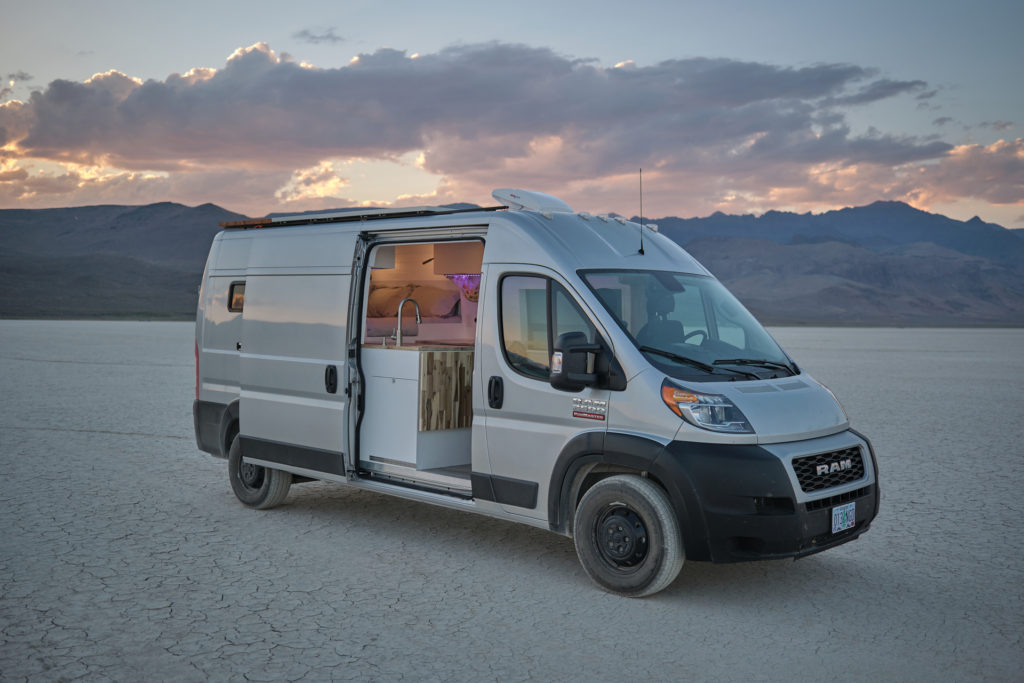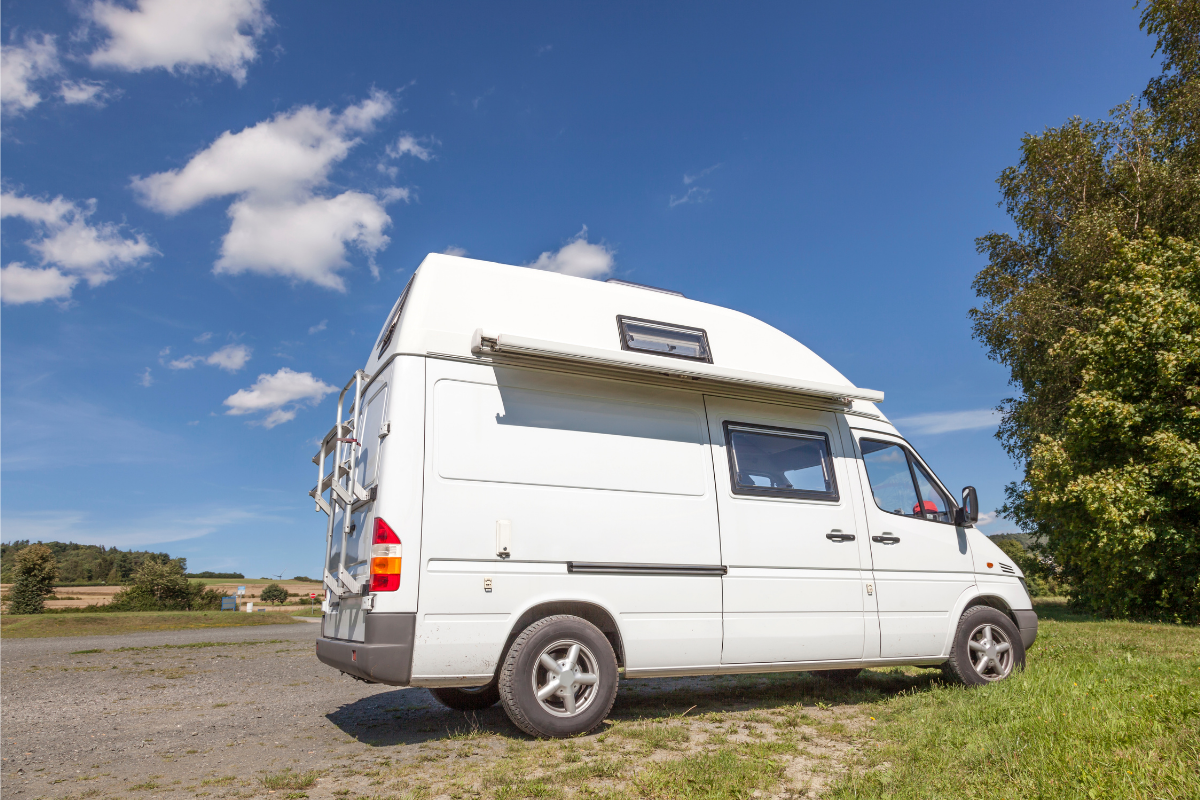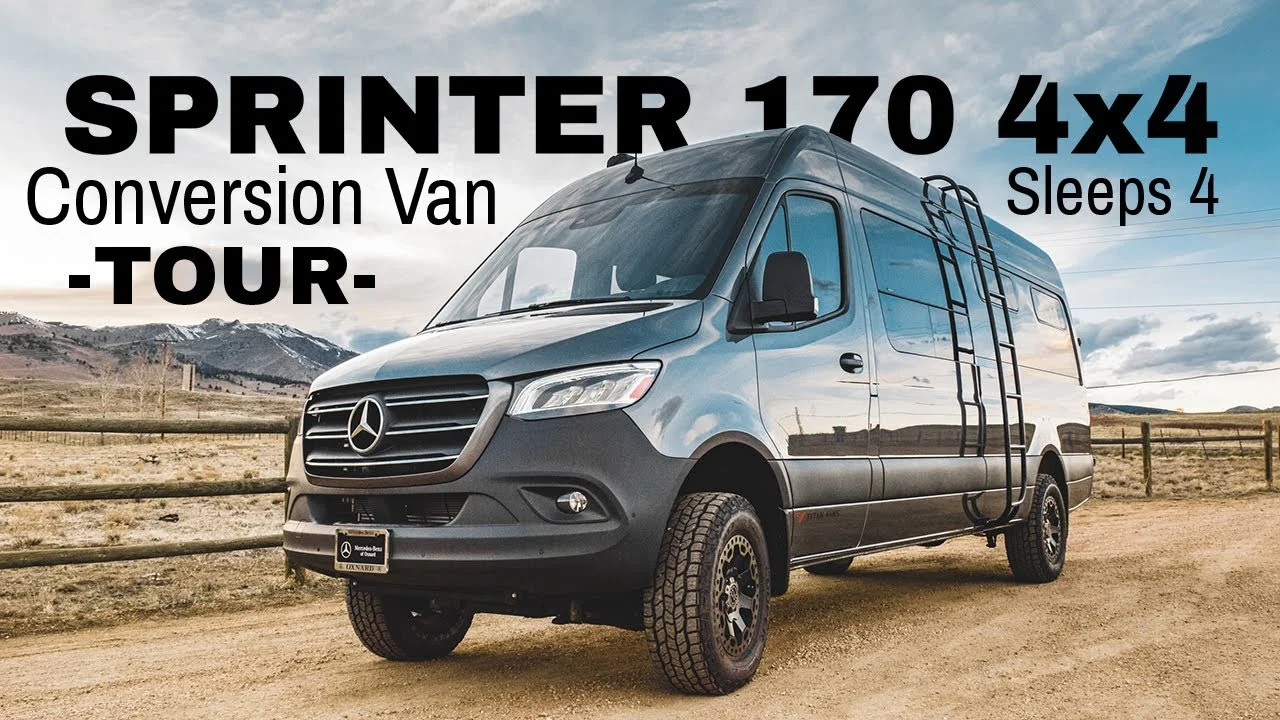The Jellybean is a house truck or DIY motorhome RV that is designed for full time living. It can be used as a “stealth” camper in areas where ordinances make traditional RVs problematic.
While the footprint of this van is about the same as an average consumer cargo van, the boxy construction and taller-than-average height of this box on wheels leave extra room inside and make it possible to stand erect, something that is almost essential for a full-time RV living experience – even short term.
Here’s the Jellybean compared to an eighteen wheeler.

The van started out as a metal box when stripped of its original interior. The body panels may be aluminum with thick spars running vertically every few feet.
These spars, in most vehicles, are hollow square tubing that will accept self-tapping, or predrilled sheet metal screws for attaching interior surfaces.
Van interior before conversion.

The van came equipped with large bay doors at the rear, two large windows (one on each side) and a large skylight was added for light during daylight hours.
The overhead window also makes the van convenient for city parking, since the blinds can be closed on the side windows for privacy while the skylight provides plenty of natural light.

The builders have done a nice job of working with available space. For example, the wheel wells have been neatly integrated into the design of the van.
On one side, they are spirited away underneath a nice sized kitchen counter. On the opposite wall a small, round, wood-burning stove has been installed atop the remaining wheel well.
The raised wheel well housing provides a flat surface to get the wood-burning stove up above the floor for better air circulation and improved heating.
The wood-burning stove, with heat shielding to protect wall and bed.

While we’ve shared many configurations for sleeping quarters in camper vans, this one works well, positioned just inside the rear doors of the van, creating a separate space that can run the full width of the van without breaking up the flow of the living space.
The kitchen is relegated to one side with a large prep space, appliances and storage all in one bank of cabinets behind the driver’s seat.
Kitchen sink and Coleman stove on the kitchen counter, main entrance on right.
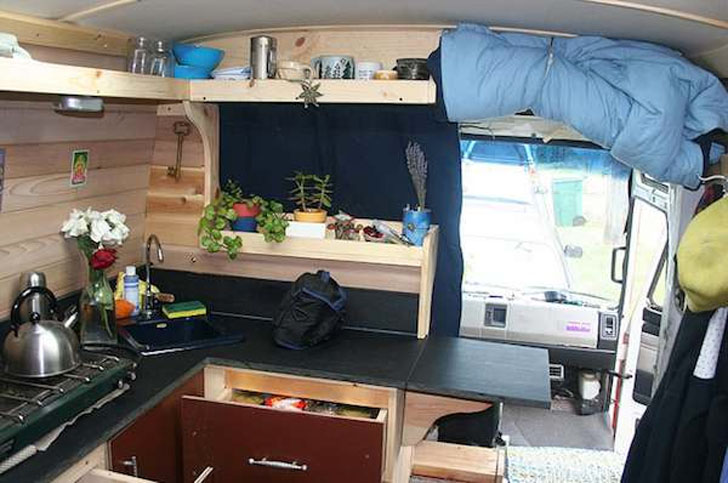
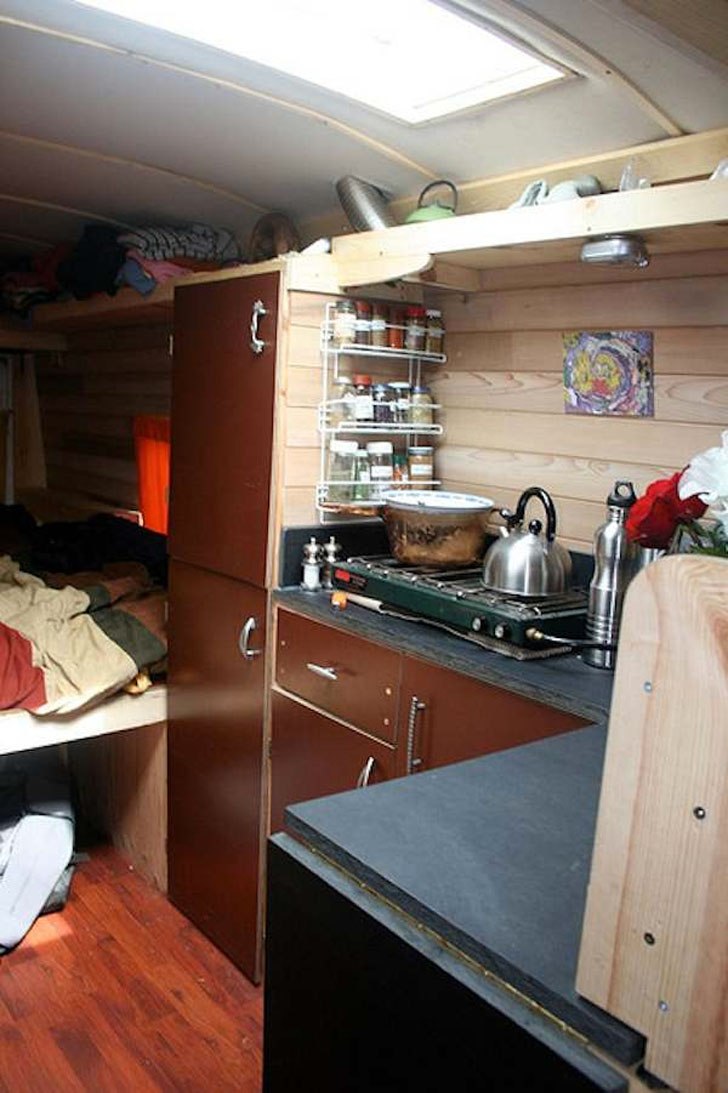
Entry to the van is possible through the front doors and the living quarters take up all but the cabin space. When looking from front to rear, the bed doubles as furniture for guests seating, while much of the rest of the van’s interior is left open.
Views from the bed of both the kitchen and heating stove, note overhead storage.


The materials chosen add to the cabin-in-the-woods-like feel that make this tight space seem homier than it otherwise might.
The ceiling is bright white, for added light and a roomy feel.
It’s covered in what looks like a neoprene fabric, with wooden battens between sections. The slightly dropped ceiling leaves plenty of room behind for spray or rigid foam insulation.
The walls and floor have a natural hardwood look, with red-stained laminate flooring and natural pine wall paneling.
Skylight over the kitchen provides ample light.

The heating stove is parked near the bed for maximum warmth and the chimney and heat shielding have been well thought out and solidly constructed to provide safety without restricting the heating potential.
By using a camp stove, they’ve eliminating the need for heavy electrical or propane, while still having an easy way to prepare meals.
All in all, it’s a minimalist approach that uses the base vehicle to best advantage to create a homey atmosphere with a nice finish.
See more photos at this Flickr album.
Via: TinyHouseTalk

